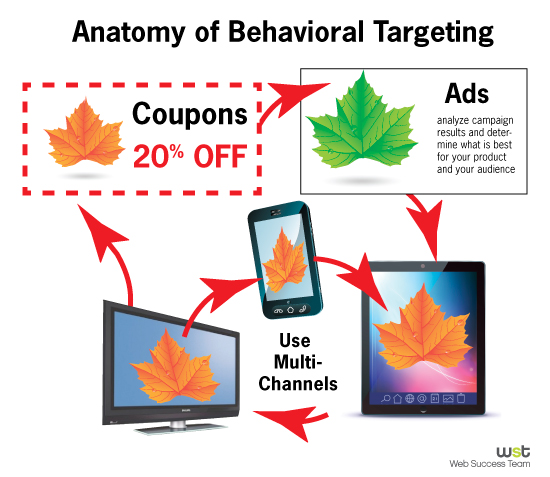Using Behavioral Targeting Without Losing Customers
By Janette Speyer and Katrina McNeill
Most of us have already experienced being “found” on the Internet. We see advertisements for products we are actually interested in and some of us wonder how the Internet knows? Consumers are being watched by advertising companies. They are watching our every move and putting together formulas to market to an incredibly targeted audience for every kind of product. According to a US Study conducted last year, 68% of US consumers find online ads “annoying.” So how do marketers correctly target consumers?
What is Behavioral Targeting?
People visiting websites have different intentions: some are there to buy, others are researching, and some might be trying to contact the business. Whatever their motives, a behavioral target has been hit. It is tracked via a cookie and from here on out, it is the marketer’s job to take that information and use it to target that consumer. But how? There are a number of criteria the marketers use which include:
- Location: What city, country, region?
- Date and time of day: This can be valued by factors like proximity to payday.
- Device: Were they using an iPhone, iPad, Android phone/tablet, Windows, Mac or Linux?
- Search keywords: Did they arrive while searching for food or maybe furniture?
- Visitor frequency: Is it their first, second, third, fifth time visitor?
- Referring URL: Where did they come from?
- Customer history: Have they bought before, what was it and how much did it cost?
Countless more variables can be taken into account like age, gender, etc. The possibilities are endless but every marketer looks for as much info as they can find about you and uses it to determine your “needs.”
When Behavioral Targeting Works
Behavioral targeting is highly effective if used correctly. Here are some positive ways to utilize behavioral target and why they work.
Coupons: Use the consumer’s history to send coupons for stores he or she actually likes to shop. The person certainly could notice that someone has clearly tracked their purchase history, but they are going to be pleased to get a discount somewhere that actually interests them.
Schedule ads with consideration: If a consumer sees the same ad several times in one week, the feeling of “stalking” can set in quickly. Instead, you should be optimizing your ads to figure out how many times a month, per advertising platform, you need to be targeting. There is no secret sauce for how often you should push ads to targets, you have to analyze campaign results and determine what is best for your product and your audience. Come from a place a caution and be aware that your marketing can go from a potential sale to, “I am never going to buy from this obnoxious, pushy company that is stalking me!”
Use Multi-Channels: Reaching costumers on different channels at different points in the browsing and purchase process and using different ad formats can potentially look more like a part of their search process then stalking. Marketers should integrate efforts across display, video, mobile, and social to reach customers wherever they are in the moment (with attention to ad frequency of course).
Conclusion
Get ahead of the competition by making your ads smart, timed correctly and useful to consumers. If you are using an agency to help you with your targeting, be sure they have all of the above criteria in mind for your campaign. The last thing anyone wants is to spend money on advertisements and then have that campaign actually lead to consumers being so annoyed by you that they perhaps even boycott your company!
If you liked this article you may also like:












